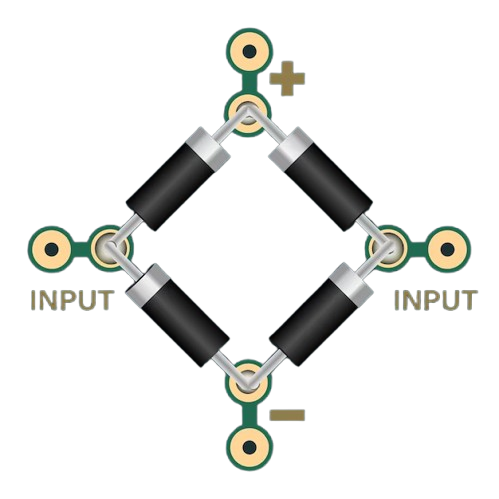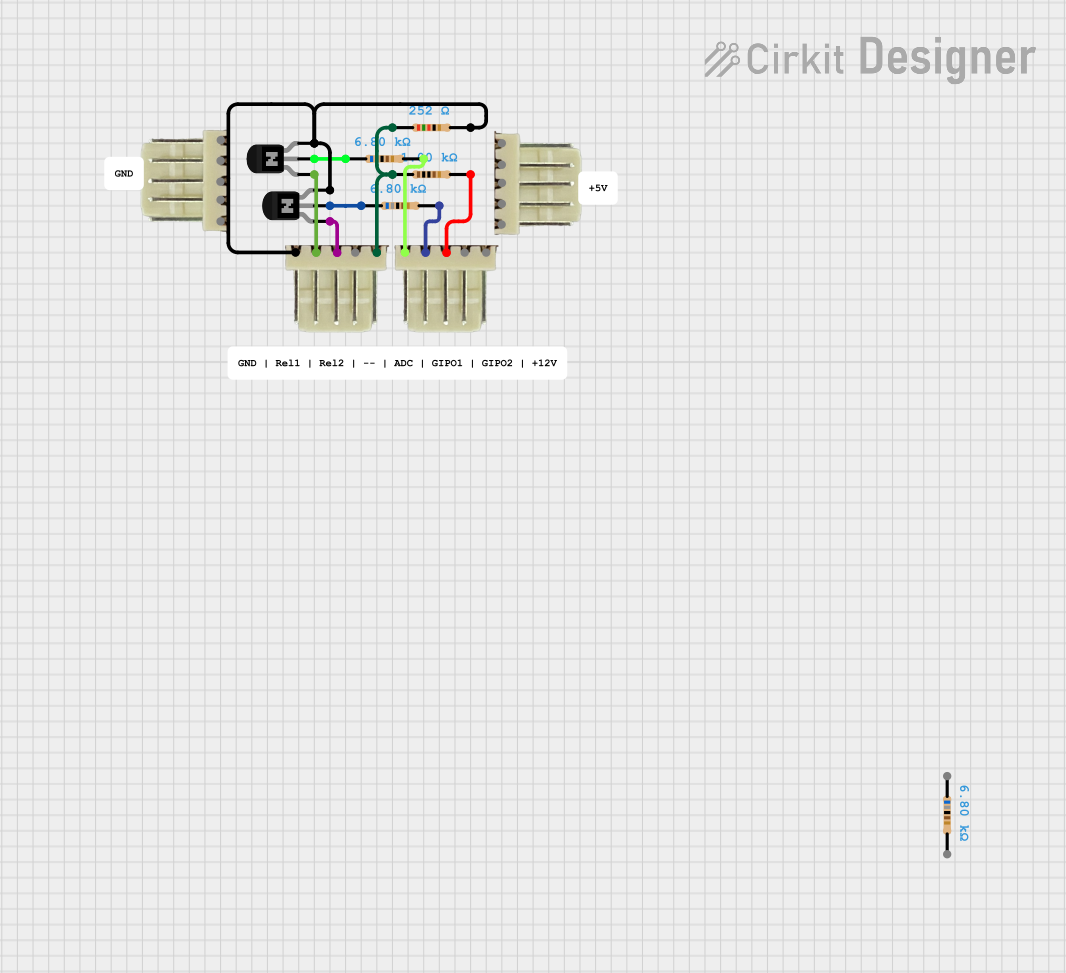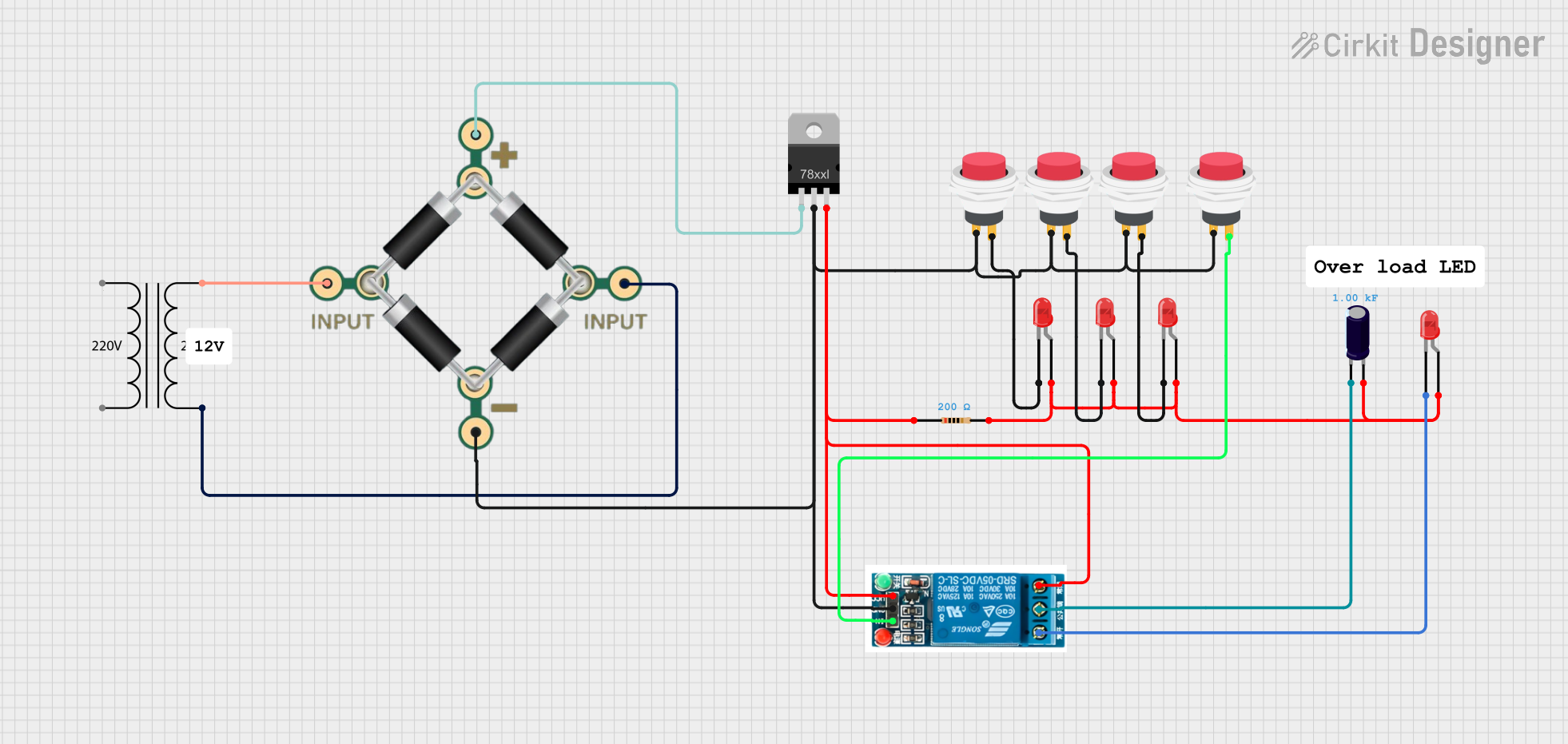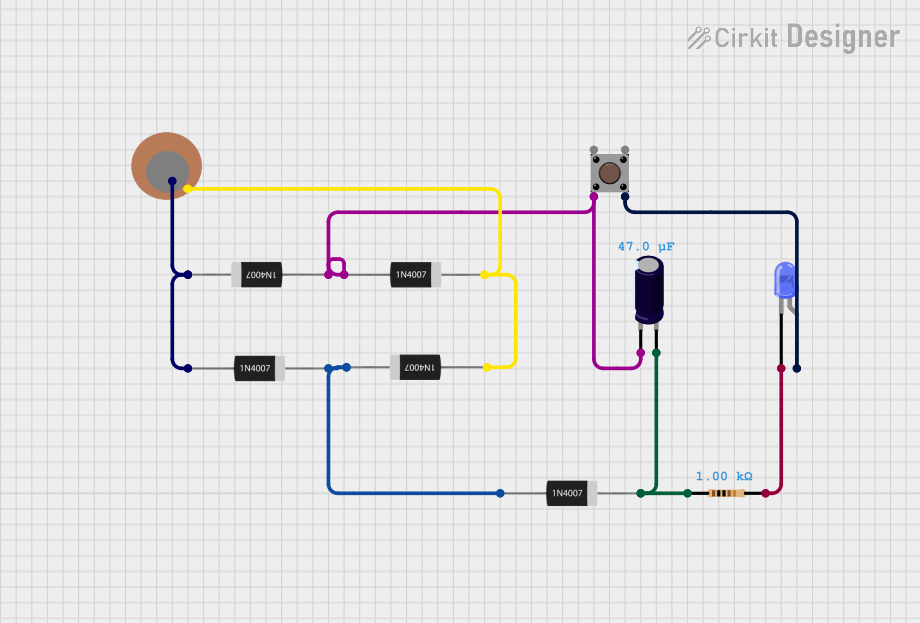
How to Use BRIDGE - 1N4007: Examples, Pinouts, and Specs

 Design with BRIDGE - 1N4007 in Cirkit Designer
Design with BRIDGE - 1N4007 in Cirkit DesignerIntroduction
The 1N4007 is a silicon rectifier diode commonly used for converting alternating current (AC) to direct current (DC). It is a robust and reliable component with a maximum reverse voltage rating of 1000V and a forward current rating of 1A. These characteristics make it ideal for use in power supply circuits, rectifier bridges, and other applications requiring AC-to-DC conversion.
Explore Projects Built with BRIDGE - 1N4007

 Open Project in Cirkit Designer
Open Project in Cirkit Designer
 Open Project in Cirkit Designer
Open Project in Cirkit Designer
 Open Project in Cirkit Designer
Open Project in Cirkit Designer
 Open Project in Cirkit Designer
Open Project in Cirkit DesignerExplore Projects Built with BRIDGE - 1N4007

 Open Project in Cirkit Designer
Open Project in Cirkit Designer
 Open Project in Cirkit Designer
Open Project in Cirkit Designer
 Open Project in Cirkit Designer
Open Project in Cirkit Designer
 Open Project in Cirkit Designer
Open Project in Cirkit DesignerCommon Applications and Use Cases
- Power supply rectification (AC to DC conversion)
- Protection circuits (e.g., flyback diodes in inductive loads)
- Voltage clamping and polarity protection
- General-purpose rectification in low- to medium-power circuits
Technical Specifications
The 1N4007 diode is designed to handle high voltages and currents in a compact package. Below are its key technical specifications:
| Parameter | Value |
|---|---|
| Maximum Reverse Voltage | 1000V |
| Maximum Forward Current | 1A |
| Peak Surge Current | 30A (8.3ms single half-sine) |
| Forward Voltage Drop | 0.7V (typical at 1A) |
| Reverse Recovery Time | 2µs |
| Operating Temperature | -55°C to +150°C |
| Package Type | DO-41 |
Pin Configuration and Descriptions
The 1N4007 is a two-terminal device with the following pin configuration:
| Pin | Name | Description |
|---|---|---|
| 1 | Anode (+) | Positive terminal; current flows into this terminal. |
| 2 | Cathode (-) | Negative terminal; current flows out of this terminal. |
The cathode is typically marked with a silver or white band on the diode body.
Usage Instructions
The 1N4007 diode is straightforward to use in circuits. Below are the steps and considerations for its proper usage:
Using the 1N4007 in a Rectifier Bridge
To create a full-wave rectifier bridge, you will need four 1N4007 diodes. Connect them as follows:
- Arrange the diodes in a diamond configuration.
- Connect the AC input to the two opposite corners of the diamond.
- The remaining two corners will serve as the DC output (positive and negative terminals).
Important Considerations
- Polarity: Ensure the diode is connected with the correct polarity. The anode should be connected to the positive side of the circuit, and the cathode to the negative side.
- Voltage and Current Ratings: Do not exceed the maximum reverse voltage (1000V) or forward current (1A) ratings to avoid damaging the diode.
- Heat Dissipation: If the diode operates near its maximum current rating, consider adding a heatsink or ensuring proper ventilation to prevent overheating.
Example: Connecting a 1N4007 Bridge to an Arduino UNO
The 1N4007 bridge can be used to power an Arduino UNO from an AC source. Below is an example circuit and code:
Circuit Description
- Use four 1N4007 diodes to create a rectifier bridge.
- Connect the AC input to the bridge.
- Add a smoothing capacitor (e.g., 1000µF, 25V) across the DC output to reduce ripple.
- Connect the DC output to the Arduino's VIN and GND pins.
Example Code
// Example code for reading an analog sensor powered by a 1N4007 bridge
// connected to an Arduino UNO. Ensure the bridge provides a stable DC voltage.
const int sensorPin = A0; // Analog pin connected to the sensor
int sensorValue = 0; // Variable to store the sensor reading
void setup() {
Serial.begin(9600); // Initialize serial communication
}
void loop() {
sensorValue = analogRead(sensorPin); // Read the sensor value
Serial.print("Sensor Value: ");
Serial.println(sensorValue); // Print the sensor value to the Serial Monitor
delay(500); // Wait for 500ms before the next reading
}
Troubleshooting and FAQs
Common Issues
Diode Overheating:
- Cause: Exceeding the maximum current rating or insufficient heat dissipation.
- Solution: Reduce the load current or add a heatsink.
No Output Voltage:
- Cause: Incorrect diode orientation or damaged diodes.
- Solution: Verify the polarity of each diode and replace any damaged components.
High Ripple in DC Output:
- Cause: Insufficient filtering.
- Solution: Add a larger smoothing capacitor or use a voltage regulator.
FAQs
Q: Can I use the 1N4007 for high-frequency applications?
A: No, the 1N4007 is not suitable for high-frequency applications due to its relatively slow reverse recovery time (2µs). Use a fast-recovery or Schottky diode for such applications.
Q: What happens if I exceed the reverse voltage rating?
A: Exceeding the reverse voltage rating (1000V) can cause the diode to break down and fail permanently.
Q: Can I use the 1N4007 in a DC circuit?
A: Yes, the 1N4007 can be used in DC circuits for polarity protection or voltage clamping.
By following these guidelines and best practices, you can effectively use the 1N4007 diode in your electronic projects.